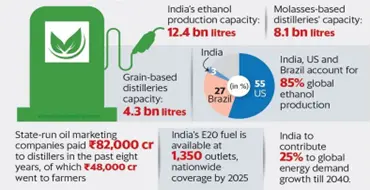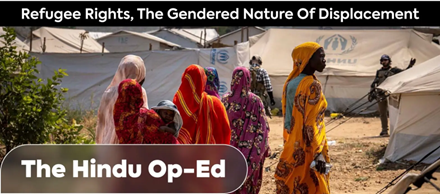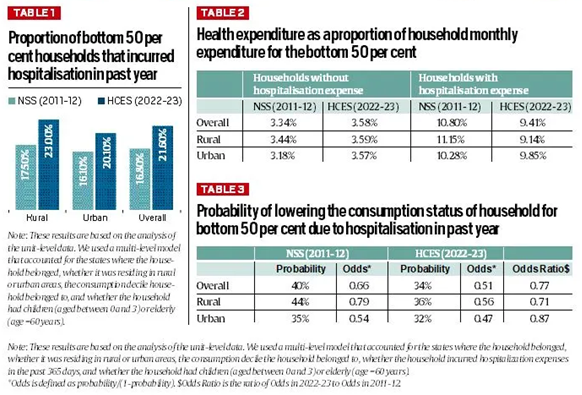Friday, 16th August 2024
Impact of Climate Change on Earth's Rotational Dynamics
Why in the news?
- Recent research has shown that melting polar ice caps due to climate change are causing the Earth to spin more slowly, leading to slight changes in the duration of a day.
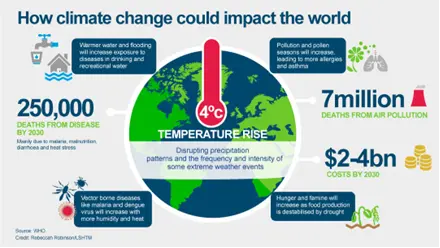
How is Climate Change Affecting Earth's Rotation?
- Melting Ice Caps:
- The melting of polar ice sheets leads to water redistribution towards the equator, increasing Earth's oblateness (flattening at the poles) and moment of inertia.
- Over the last two decades, Earth's rotation has slowed by about 1.3 milliseconds per century.
- This occurs due to the principle of angular momentum: as ice melts and shifts towards the equator, Earth's moment of inertia increases, causing a decrease in rotational speed to conserve angular momentum.
- Projections indicate that under high emission scenarios, this slowdown could accelerate to 2.6 milliseconds per century, making climate change a significant factor in Earth's rotational deceleration.
- Axis Shifts:
- Melting ice also affects Earth's axis of rotation, causing a slight but measurable shift.
- This shift, though small, highlights the impact of climate change on fundamental Earth processes, including the phenomenon known as the Chandler wobble, which can affect rotational timing and stability.

Other Factors Affecting Earth's Rotation Speed:
- Groundwater Depletion:
- The loss of groundwater changes mass distribution on Earth, which can influence rotational dynamics and contribute to variations in the planet's rotation speed.
- Torsional Waves:
- Convection currents in the Earth's outer core generate torsional waves, which oscillate through the Earth and can affect the planet's rotation.
- These waves are linked to changes in the length of a day.
- Influence of Celestial Bodies:
- Earth's rotation is influenced by the Moon and other celestial bodies. Historically, the Moon was much closer to Earth, resulting in shorter days of about 18 hours and 41 minutes.
- Today, as the Moon slowly moves away, days are gradually lengthening due to the Moon's tidal effects on Earth's rotation.
- Earth's Interior Dynamics:
- Movements within the Earth's mantle and core, such as changes in the tilt of the inner core or fluctuations in core density, can impact the Earth's rotational speed.
- These internal dynamics contribute to variations in how fast the Earth spins.
Implications of the Slowdown of Earth's Rotation:
- Leap Seconds:
- Earth's rotational slowdown impacts the need for leap seconds to keep atomic clocks synchronised with solar time.
- This adjustment may cause issues in technology, such as network outages or discrepancies in data timestamps.
- Global Positioning Systems (GPS):
- GPS satellites depend on precise time measurements. Variations in Earth’s rotation can affect GPS accuracy, leading to minor navigation and location errors.
- Sea Level Rise:
- A slowdown in Earth’s rotation can affect ocean currents, including the Global Mean Ocean Circulation (GMOC), which might influence regional climate patterns and worsen sea level rise.
- Earthquakes and Volcanic Activity:
- Changes in Earth's rotation and mass distribution may influence tectonic processes, affecting stress distribution in the crust and potentially impacting seismic and volcanic activity.
- Climate Change Evidence:
- The slowdown of Earth's rotation highlights the extensive impact of climate change, affecting weather patterns, sea levels, and the planet’s rotational mechanics.
Way Forward: Addressing the Impact of Climate Change on Earth’s Rotation:
- Increase Awareness and Education
- Develop educational programs to inform the public about how climate change affects Earth's rotation and physical systems.
- Enhance Climate Research
- Fund and support research focused on the interaction between climate change and Earth's rotational dynamics.
- Develop Adaptive Technologies
- Invest in resilient timekeeping systems that can adapt to changes in Earth's rotation.
- Improve GPS and navigation systems to account for gradual changes in Earth's rotational speed.
- Implement Climate Mitigation Strategies
- Advocate for policies promoting renewable energy and reducing fossil fuel use.
- Support sustainable practices in agriculture, transportation, and urban planning.
- Execute Climate Agreements
- Engage in global agreements, such as the Paris Agreement, to set and meet emission reduction targets.
- Establish Monitoring Programs
- Create programs to continuously monitor sea levels, polar ice melt, and their impact on Earth's rotation.
- Develop Contingency Plans
- Prepare for potential disruptions in technologies reliant on precise timekeeping, including contingency plans for sectors like finance and space exploration.
- Encourage Investment in Green Technologies
- Lobby for both government and private sector investments in technologies designed to mitigate climate change effects.
|
UPSC Civil Services Examination Previous Year Question (PYQ) Prelims Q1. Variations in the length of daytime and nighttime from season to season are due to (2013)
Ans: (d) |
Women and Men in India 2023
Why in the news?
- The Ministry of Statistics and Programme Implementation has released the 25th edition of the report titled Women and Men in India 2023.

Key Highlights of the 2023 Report:
- Population Projections:
- By 2036, India's population is projected to reach 152.2 crores.
- Sex Ratio Improvement:
- The sex ratio is expected to improve to 952 women per 1000 men by 2036, up from 943 in 2011.
- Female Population Share:
- The female percentage is anticipated to constitute 48.8% in 2036, compared to 48.5% in 2011, indicating a more feminine population by 2036.
- Age Demography:
- The proportion of individuals under 15 years is projected to decrease from 2011 to 2036, likely due to declining fertility rates.
- Conversely, the proportion of the population aged 60 years and above is expected to see a significant increase.
- Age Specific Fertility Rate (ASFR):
- From 2016 to 2020, ASFR in the age groups 20-24 and 25-29 decreased from 135.4 and 166.0 to 113.6 and 139.6, respectively.
- Definition:
- ASFR is the number of live births in a specific age group of women per thousand female population of that age group.
- Later Childbearing:
- The ASFR for ages 35-39 increased from 32.7 to 35.6 during the same period, suggesting women are expanding their families later in life.
- Adolescent Fertility Rate:
- It was 33.9 for the illiterate population compared to 11.0 for the literate population in 2020.
- Maternal Mortality Ratio (MMR):
- India has achieved a major milestone by reducing MMR to 97 per lakh live births in 2018-20, approaching the SDG target of reducing MMR to 70 by 2030.
- Definition:
- MMR is the number of maternal deaths per 100,000 live births during a given period.
- Infant Mortality Rate (IMR):
- Both male and female IMR were equal at 28 infants per 1000 live births in 2020.
- Definition:
- IMR is the probability of a child born in a specific year or period dying before reaching the age of one year.
- Under-Five Mortality Rate:
- It decreased from 43 in 2015 to 32 in 2020, with the gap between boys' and girls' under-five mortality rates also narrowing.
- Labour Force Participation Rate (LFPR):
- Male LFPR:
- Increased from 75.8% in 2017-18 to 78.5% in 2022-23.
- Female LFPR:
- Increased from 23.3% to 37% during the same period.
- Male LFPR:
- Definition:
- LFPR is the proportion of the working population aged 16-64 currently employed or seeking employment.
- Participation in Elections:
- Women's participation in the 2014 Lok Sabha elections increased to 65.6% and further rose to 67.2% in the 2019 Lok Sabha elections.
- Women Entrepreneurship:
- Between 2016 and 2023, the Department for Promotion of Industry and Internal Trade (DPIIT) recognized a total of 1,17,254 start-ups.
- Of these, 55,816 start-ups are led by women, accounting for 47.6% of the total recognized start-ups.

Challenges Associated with India’s Demographic Profile:
- Son Meta Preference:
- Skewed sex ratio due to preference for sons, who are seen as financial support, while daughters are viewed as liabilities due to dowry.
- Ageing Population:
- Rapidly increasing elderly population, expected to rise from 153 million to 347 million by 2050, posing challenges in healthcare and social support.
- Disparity in Health Outcomes:
- Significant health disparities between regions, with northeastern states having higher infant mortality rates and rural-urban gaps.
- Barrier to Women's LFPR:
- Patriarchal norms and gender roles limit women's access to education and jobs, keeping them out of the labour force.
- Absence of Informed Choice in Elections:
- Voter decisions are often influenced by caste and religion rather than informed policy choices due to lack of education.
- Informal Women Entrepreneurship:
- Women-led enterprises are mostly rural, small-scale, and lack formal funding, operating primarily in textiles, handicrafts, and food processing.
Initiatives Related to Overall Demographic Development in India:
- Beti Bachao Beti Padhao Scheme:
- Aimed at addressing the declining child sex ratio and promoting the survival, protection, and education of the girl child.
- Rashtriya Uchhattar Shiksha Abhiyan (RUSA):
- A scheme focused on funding higher education institutions for improving overall quality and enhancing access, equity, and inclusion.
- Aayushmaan Bharat Yojana:
- A health scheme providing insurance coverage to economically vulnerable families, ensuring access to healthcare services.
- Digital Health Mission:
- An initiative aimed at creating a comprehensive digital health ecosystem, improving access and efficiency in healthcare delivery.
- Mission Indradhanush (MI):
- A vaccination program to ensure full immunisation for children and pregnant women, particularly in remote and underserved areas.
- Stand-Up India Scheme:
- A scheme designed to promote entrepreneurship among women and Scheduled Castes/Scheduled Tribes by providing bank loans for setting up enterprises.
Way Forward:
- Balanced Sex Ratio:
- Organise regular meetings with scan centre proprietors to enforce the Pre-Conception and Pre-Natal Diagnostic Techniques Act, 1994 and take legal action against those conducting illegal abortions.
- Promote contraceptive use, like oral pills, injectables, and intrauterine devices, to prevent unwanted pregnancies.
- Handling Aging Population:
- Provide specialised healthcare for seniors, foster intergenerational bonds, and use technology to make healthcare and social services accessible and affordable, thereby boosting the silver economy.
- Boosting Women's LFPR:
- Implement child-care subsidies to free up mothers' time for labour force participation, significantly impacting female employment rates.
- Supporting Women Entrepreneurship:
- Encourage the formalisation of women-led enterprises, provide institutional finance, and offer skill development to ensure greater participation and equity for women entrepreneurs.
|
UPSC Civil Services Examination, Previous Year Question (PYQ) Prelims: Q:1 To obtain full benefits of demographic dividend, what should India do? (2013) (a) Promoting skill development (b) Introducing more social security schemes (c) Reducing infant mortality rate (d) Privatisation of higher education
Ans: (a)
Q:2 India is regarded as a country with “Demographic Dividend”. This is due to (2011)
Ans: (b)
Q:3 Despite being a high saving economy, capital formation may not result in significant increase in output due to (2018)
Ans: (d)
Q:4 As per India’s National Population Policy, 2000, by which one of the following years is it our long-term objective to achieve population stabilisation? (2008)
Ans: (c)
Mains: Q:1 Examine the role of ‘Gig Economy’ in the process of empowerment of women in India (2021) Q:2 Discuss the main objectives of Population Education and point out the measures to achieve them in India in detail. Q:3 Critically examine whether growing population is the cause of poverty OR poverty is the main cause of population increase in India. (2015) |
RBI Employment Data
Why in the news?
- Frequently cited for job creation analysis in India, curated by Delhi School of Economics and ICRIER, now housed at RBI. It tracks productivity growth using data on capital, labour, energy, material, and services.
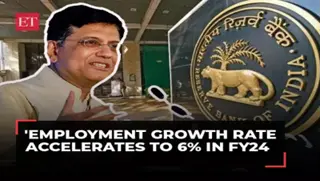
Methodological Limitations and Implications:
- Population Estimation and Worker-Population Ratios (WPR)
- Process: Estimates are derived by applying WPRs to demographic data, interpolated from Census or National Population Commission projections.
- Issues: Projections may overestimate population growth, leading to inflated labour force estimates. Assumes uniform growth across rural and urban areas, which may not reflect actual trends.
- Use of Projections and Potential Overestimation
- Problem: Reliance on potentially inflated population projections can exaggerate labour force estimates. Overestimation occurs due to outdated or inaccurate growth rate assumptions.
- Sectoral Employment Distribution
- Approach: Employment is distributed across sectors based on PLFS data, not accounting for sectoral changes or new economic dynamics.
- Concern: Outdated sectoral data may misrepresent current employment trends.
- Temporal Comparability and WPR Variability
- Challenge: Differences between EUS and PLFS data complicate comparisons over time. Methodology assumes continuity without addressing potential discrepancies.
- Inclusion of Subsidiary Employment
- Impact: Counting individuals in marginal or secondary jobs can distort employment quality and stability perceptions, as these jobs may be less secure.
Implications for Policy and Analysis
- Policy Misguidance: Overestimation of employment figures might lead to misguided policies, underestimating the need for job creation or ignoring underemployment issues.
- Complacency Risk: Reliance on inflated data may result in complacency regarding employment challenges.
Emerging Employment Trends and Contrasting Data
- Employment Trends According to KLEMS
- Agricultural Employment: Increased from 20 crore to 25 crore (2018-19 to 2022-23).
- Service Sector: Rose from 17.2 crore to 20.2 crore.
- Manufacturing: Grew from 5.5 crore to 6.3 crore.
- Contrasting Data between ASUSE and KLEMS
- Discrepancies: ASUSE data estimated employment in unorganised sectors at 10.96 crore, with total employment figures inflated by KLEMS to 56.8 crore.
- Issue: Discrepancies suggest KLEMS may not fully capture employment nuances, particularly in unorganised sectors.
Conclusion
While KLEMS provides valuable data on productivity and employment trends, its methodological limitations necessitate cautious interpretation. The reliance on interpolated data and assumptions about population growth may lead to inflated or misleading employment figures. A thorough analysis of these figures, in conjunction with other data sources, is essential for accurate understanding and policy formulation.
Source: IE
ILO to help Eliminate Child Labour, Forced Work in Cotton
Why in the news?
- Recently, Indian Textile Industry (CITI) has joined hands with the International Labour Organisation (ILO) to help farm workers and small and medium farmers engaged in cotton cultivation.
- The project was launched in Delhi on Tuesday and is expected to reach out to 65 lakh cotton farmers in 11 States.
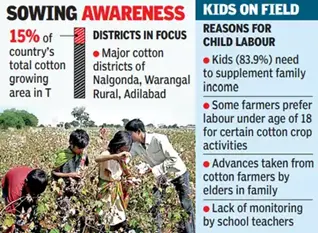
What is Child Labour?
- "Child labour" refers to work that deprives children of their childhood, potential, and dignity, and is harmful to their physical and mental development.
- The classification of "child labour" varies by age, type and hours of work, and working conditions, differing from country to country.
International Organisations Regarding Child Labour
- United Nations Children’s Fund (UNICEF):
- Objective: Provides humanitarian and developmental aid to children globally.
- Guidance: Operates under the Convention on the Rights of the Child, 1989.
- Funding: Relies on voluntary contributions from governments and private donors.
- Programs: Focus on community-level services to promote children's health and well-being.
- Headquarters: New York, U.S.
- International Labour Organisation (ILO):
- Foundation: Established in 1919 under the League of Nations; the oldest UN specialised agency.
- Objective: Advances social and economic justice by setting international labour standards.
- Governance: Features a tripartite structure involving governments, employers, and workers of member states to develop policies and promote decent work.
- Headquarters: Geneva, Switzerland
Child Labour in India:
- Statistics: Approximately 10.1 million children aged 7 to 16 years are engaged in work in India.
- Distribution: Rural areas account for 80% of child labour, with the highest concentration in Uttar Pradesh.
- Types of Work: Children are employed in various tasks, including industrial, agricultural, and domestic roles like maids and babysitters.
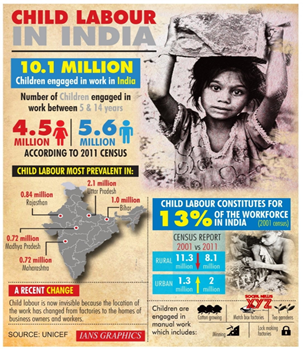
Child Labour (Prohibition and Regulation) Amendment Act, 2016
- Amendment Details: Updates the original Child Labour (Prohibition and Regulation) Act of 1986.
- Prohibitions: Bans employment of children under 14 years and restricts adolescents (14-18 years) from hazardous jobs.
- Permitted Work: Allows children to work in family enterprises or as child artists outside school hours or during vacations.
- Legal Provisions: Offences under the Act are now compoundable and cognizable, and a Child and Adolescent Labour Rehabilitation Fund has been established.
- Rules: The Child Labour (Prohibition & Regulation) Amendment Rules, 2017, outline State Governments' and District Authorities' responsibilities for enforcement.
ILO Initiative to Address Child Labour and Forced Work in Cotton Fields
- Initiative: The ILO and the Confederation of Indian Textile Industry have launched the "Promoting Fundamental Principles and Rights at Work" (FPRW) project.
- Scope: Aims to impact 65 lakh cotton farmers across 11 states in India.
- Goals: Focuses on promoting freedom of association, eliminating discrimination, and ensuring safe working conditions.
- Support: Includes providing information on government schemes, promoting financial inclusion, and supporting education and skill development in cotton-growing communities.
|
UPSC Civil Services Examination, Previous Year Question (PYQ) Prelims Q:1 International Labour Organization’s Conventions 138 and 182 are related to: (2018)
Ans: (a)
Mains Q:1 Examine the main provisions of the National Child Policy and throw light on the status of its implementation. (2016) |
Source: TH
WHO declares monkeypox a public health emergency
Why in the news?
- Recently, The WHO has declared monkeypox a public health emergency of international concern, with the Democratic Republic of the Congo and other African countries being severely affected.
- Since 2022, there have been 99,176 cases and 208 deaths reported from 116 countries.

World Health Organisation (WHO):
- About:
- Foundation: Established in 1948, WHO is the United Nations agency responsible for global public health.
- Membership: Comprises 194 member states.
- Headquarters: Geneva, Switzerland.
- Roles: Engages in vaccination campaigns, manages health emergencies, and supports primary health care initiatives globally.
- Funding: Supported through member fees based on economic status and voluntary contributions.
- India & WHO:
- Membership: India joined WHO in January 1948 and is part of the Southeast Asia Region.
- Historical Leadership: Dr. Chandra Mani served as the first regional director for Southeast Asia from 1948 to 1968. Currently, Dr. Poonam Khetrapal Singh holds the position, having been appointed in 2014.
- Notable Figures: Dr. Soumya Swaminathan served as WHO’s Chief Scientist from 2019 to 2022.
What Does Declaration as a PHEIC Mean?
- Definition: A PHEIC is declared for an extraordinary event posing a public health risk to other states through international disease spread.
- Purpose: The PHEIC status triggers a coordinated international response, potentially unlocking funding and facilitating collaboration on vaccines and treatments.
Monkeypox
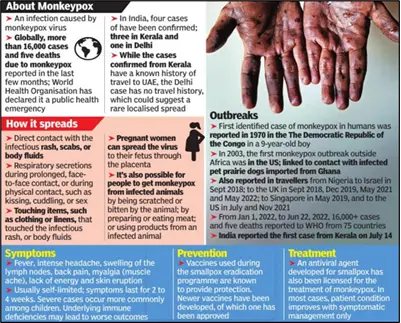
- About:
- Nature: Monkeypox is a rare zoonotic viral disease caused by the Orthopoxvirus genus in the Poxviridae family, related to smallpox.
- Discovery: Identified in 1958 during outbreaks in captive monkeys, hence the name ‘monkeypox’.
- Treatment: No specific treatment exists, but the Vaccinia vaccine, used against smallpox, has demonstrated 85% efficacy in preventing monkeypox.
What is the Reason for the Current Concern?
- Current Strain: Clade Ib of the mpox virus, which is transmitted primarily through sexual contact, is raising alarms.
- Historical Spread: Clade I infections were previously spread through zoonotic events and were not known for sexual transmission.
- Recent Developments: Over 100 cases of clade Ib have been reported in countries neighbouring the DRC (Burundi, Kenya, Rwanda, Uganda), where mpox was not previously reported.
- Statistics: Total mpox cases have risen to over 15,600, with 537 deaths reported this year. The virus is now spreading human-to-human and rapidly mutating into new lineages.
Risk for India:
- International Spread: The first case of clade Ib outside Africa was reported in Sweden, raising concerns about potential global spread via international travel.
- Previous Outbreak: In 2022, India reported 27 cases and one death from the less virulent clade II, initially linked to international travel but later showing local transmission.
- Current Situation: The surge in mpox cases in Africa and the emergence of a new sexually transmissible strain highlight the global urgency for effective response measures.
|
UPSC Civil Services Examination, Previous Year Questions (PYQs) Mains Q:1 Critically examine the role of WHO in providing global health security during the Covid-19 pandemic. (2020) |
Source: IE
Flood Watch India 2.0
Why in the news?
- Recently, the Union Minister Shri C.R. Paatil for Jal Shakti launched Version 2.0 of the ‘FloodWatch India’ mobile application, which has been developed by the Central Water Commission (CWC).
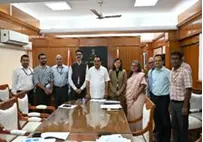
About FloodWatch India:
- Real-Time Information: The app provides real-time information related to flood situations and forecasts for up to 7 days.
- User-Friendly: Developed in-house, the app features a user-friendly interface with readable and audio broadcasts in two languages: English and Hindi.
- Flood Monitoring: Users can access real-time flood monitoring to check the current flood situation across the country.
- Data Utilisation: It leverages near real-time river flow data from various sources.
- Flood Forecasts: Users can view flood forecasts at their nearest location directly from the Home Page.
- State/Basin Forecasts: The app offers State-wise/Basin-wise flood forecasts (up to 24 hours) and flood advisories (up to 7 days), accessible by selecting specific stations, states, or basins from a dropdown menu.
- Advanced Technologies: It employs advanced technologies such as satellite data analysis, mathematical modelling, and real-time monitoring for accurate and timely flood forecasts.
New Features in FloodWatch India 2.0
- Increased Monitoring Stations: The app now includes current information from an additional 392 flood monitoring stations, bringing the total to 592, providing users with a comprehensive overview of flood conditions nationwide.
- Reservoir Information: It also offers additional data on the storage positions of 150 major reservoirs, aiding users in understanding potential flood risks in downstream areas.
|
UPSC Civil services Examination PYQ Mains: Q:1 The frequency of urban floods due to high intensity rainfall is increasing over the years. Discussing the reasons for urban floods, highlight the mechanisms for preparedness to reduce the risk during such events. (2016) |
Source: PIB
Jiyo Parsi Scheme
Why in the news?
- The Minister Kiren Rijiju for Minority Affairs recently launched the Jiyo Parsi Scheme portal.
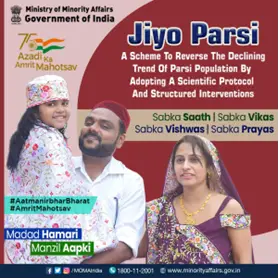
About Jiyo Parsi Scheme:
- Purpose: The Jiyo Parsi Scheme is a unique Central Sector Scheme implemented by the Ministry of Minority Affairs to address the population decline of the Parsi Community in India.
- Launch Year: The scheme was introduced in 2013-14.
- Objective: Its primary goal is to reverse the declining trend of the Parsi population by using scientific methods and structured interventions to stabilise their population in India.
- Components: The scheme consists of three main components: Medical Assistance, Advocacy, and Health of Community.
- Medical Assistance: Provides financial support to Parsi couples for medical treatment following standard medical protocols.
- Health of Community: Offers financial assistance to Parsi couples for childcare and support for elderly members of the community.
- Advocacy: Conducts outreach and advocacy programs to raise awareness among the Parsi population.
Source: TH
Dysbiosis
Why in the news?
- Antibiotics, especially broad-spectrum ones, can significantly reduce gut bacteria, leading to a disruption called dysbiosis.
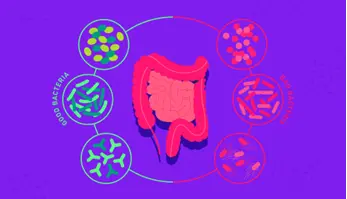
About Dysbiosis:
- Definition: Dysbiosis is an imbalance within a community of microorganisms living together in a microbiome.
- Microbiomes in the Body: Our bodies host several distinct microbiomes, which are communities of microorganisms that assist us in various functions.
- Balanced Microbiome: A healthy microbiome has a diverse range of microorganisms, with no single bacteria, virus, or fungus dominating. Dysbiosis indicates a lack of this diversity and balance, affecting how these microorganisms' function in the body.
- Occurrence: It commonly occurs when the bacteria in the gastrointestinal (GI) tract—comprising the stomach and intestines—become unbalanced.
- Causes: Dysbiosis can result from infections, antibiotic use, or certain dietary factors.
How Does Dysbiosis Affect Us?
- Microbial Imbalance: A lack of diversity and balance in any microbiome can allow one type of microorganism to dominate.
- Increased Vulnerability: Dysbiosis makes the body more susceptible to infections from both internal and external germs.
- Functional Disruption: It can also disrupt other critical services typically provided by a healthy microbiome.
- Symptoms: While sometimes asymptomatic, dysbiosis may cause abdominal pain, bloating, vomiting, and skin issues. It can occur due to exposure to harmful bacteria or the overgrowth of a single type of bacteria.
Treatment:
- Treatment Goal: The primary aim is to increase gut microbiome biodiversity.
- Methods:
- Fecal microbiota transplantation
- Probiotic therapy
- Microbial metabolic pathway therapy
- Specific Treatments: If an underlying disease or condition is causing dysbiosis, targeted treatment for that condition is necessary.
Source: TH
Amrit Bharat Station Scheme
Why in the news?
- Recently, western railway has announced the inclusion of Kandivali and Dahisar railway stations in the launched Amrit Bharat Station Scheme (ABSS).
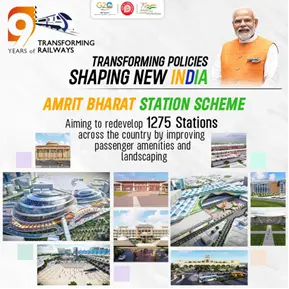
Amrit Bharat Station Scheme
About:
- Launch Date: February 2023
- Initiative by: Ministry of Railways, India
- Purpose: The Amrit Bharat Station Scheme is an ongoing mission by Indian Railways aimed at redeveloping railway stations across the country.
- Focus: It emphasises the long-term development of railway stations through the creation and phased implementation of master plans to enhance various station facilities.
Key Objectives:
- Holistic Development:
- The scheme aims to address the unique needs of each station, ensuring a comprehensive approach to railway station enhancement.
- Modernization:
- The goal is to transform railway stations into modern, well-equipped hubs with improved passenger amenities, better traffic circulation, inter-modal integration, and upgraded signage.
- Sustainability and Eco-friendliness:
- The scheme emphasises sustainable practices, including the use of energy-efficient lighting, rainwater harvesting systems, and green spaces.
- It also promotes the use of ballastless tracks to reduce noise and vibration.
Key Features:
- Modern Passenger Amenities:
- Clean and hygienic waiting areas and restrooms.
- Special amenities for disabled passengers.
- Availability of food and beverage outlets.
- Improved Traffic Circulation:
- Separate entry and exit points for passengers and vehicles.
- Widening of roads and footpaths.
- Provision of adequate parking facilities.
- Inter-modal Integration:
- Seamless connectivity between railway stations and other transport modes like buses, taxis, and auto rickshaws.
- Upgraded Signage:
- Clear and visible signage in multiple languages to guide passengers.
- Sustainability and Eco-friendliness:
- Installation of energy-efficient lighting and appliances.
- Implementation of rainwater harvesting systems.
- Development of green spaces.
- Introduction of ballastless tracks to minimise noise and vibration.
- Utilisation of roof plazas, where available, to provide additional space for commercial activities and passenger amenities.
- Ultimate Goal:
- The long-term vision of the Amrit Bharat Station Scheme is to transform railway stations into vibrant city centres that enhance the travel experience and serve as well-integrated hubs for urban development.
Source: TOI
Supreme Court's Jurisprudence on Civil Liberties
Context:
- The Supreme Court ruled that a speedy trial is a fundamental right under Article 21 of the Constitution, stating that prolonged incarceration without trial, even under stringent laws like the Prevention of Money Laundering Act (PMLA), violates this right.
- The Court emphasised that "liberty is an intrinsic part" of constitutionalism and reinforced that bail should be the norm, not the exception.
- This ruling highlight the need for timely justice and addresses broader concerns about delays and inefficiencies in the criminal justice system, especially under strict laws like the PMLA.
- The decision underscores the Court's role in upholding civil liberties and democratic values, advocating for a more efficient and rights-respecting justice system.
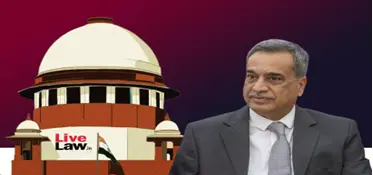
Constitutional Provisions Making the Supreme Court the Guardian of Civil Liberties
- Article 13:
- Declares laws contravening Fundamental Rights as void. The Supreme Court adjudicates on the constitutionality of such laws.
- Article 32:
- Grants the right to constitutional remedies, enabling individuals to directly approach the Supreme Court for enforcement of Fundamental Rights.
- Article 136:
- Provides the Supreme Court with the power to grant special leave to appeal from any court or tribunal, including issues related to civil liberties.
- Article 142:
- Empowers the Supreme Court to pass any order or decree necessary to do complete justice, including the protection of civil liberties.
- SLP (Special Leave Petition):
- Allows appeals to the Supreme Court against lower court decisions on significant legal issues, including those involving civil liberties.
Other Tools:
- Writs:
- Legal orders to enforce Fundamental Rights or direct public authorities. Includes Habeas Corpus, Mandamus, Prohibition, Certiorari, and Quo Warranto.
- PIL (Public Interest Litigation):
- Petitions to address public issues and ensure justice on broader social concerns.
- Judicial Review:
- The power of courts to assess the constitutionality of laws and government actions to ensure compliance with the Constitution.
Various Doctrines
- Basic Structure Doctrine:
- Asserts that certain fundamental features of the Constitution, such as democracy and secularism, cannot be altered by amendments (Kesavananda Bharati v. State of Kerala, 1973).
- Doctrine of Severability:
- Allows for invalidation of only unconstitutional parts of a law, keeping the rest functional if it can operate independently.
- Doctrine of Eclipse:
- States that laws infringing on Fundamental Rights are suspended, not wholly void, and can be revived if made constitutional.
- Doctrine of Substantive Due Process:
- Protects fundamental rights beyond procedural fairness, ensuring laws are just, fair, and reasonable.
- Doctrine of Colorable Legislation:
- Prevents the government from using its legislative authority in an unconstitutional manner, also known as "Fraud on the Constitution."
Notable Supreme Court Cases Upholding Civil Liberties:
- Delhi Excise Policy Case (2024):
- Reaffirmed the right to a speedy trial under Article 21, highlighting issues with prolonged incarceration and the need for timely justice.
- Arnab Goswami vs. The State of Maharashtra (2020):
- Emphasised personal liberty and the principle that bail should be the norm, reinforcing the right to a fair and speedy trial under Article 21.
- Navtej Singh Johar vs. Union of India (2018):
- Decriminalized consensual homosexual acts by striking down Section 377 of the IPC, affirming LGBTQ+ rights and individual dignity.
- Justice K.S. Puttaswamy vs. Union of India (2017):
- Recognized the right to privacy as fundamental, protecting individual dignity against arbitrary state actions.
- Shreya Singhal v. Union of India (2015):
- Struck down Section 66A of the IT Act for violating freedom of speech and expression under Article 19(1)(a).
- Lalita Kumari vs. Government of Uttar Pradesh (2014):
- Reinforced the obligation of police to register FIRs for cognizable offences, ensuring prompt action on grievances.
- Lily Thomas vs. Union of India (2013):
- Disqualified lawmakers convicted of serious crimes from holding office immediately, enhancing accountability and credibility of elected representatives.
- Gaurav Jain vs. Union of India (1997):
- Addressed the rights of women and children in prostitution, recognizing them as victims and deserving protection and dignity.
- Maneka Gandhi vs. Union of India (1978):
- Expanded Article 21 to include the right to live with dignity, emphasising fairness in laws affecting personal liberty.
- Kesavananda Bharati vs. State of Kerala (1973):
- Established the Basic Structure Doctrine, protecting fundamental rights as part of the Constitution's basic framework.
- A.K. Gopalan vs. State of Madras (1950):
- Early case on preventive detention, laying groundwork for later rulings that refined these laws to better align with fundamental rights.
- Romesh Thappar v. State of Madras (1950):
- Held that banning a newspaper violated freedom of speech and expression under Article 19(1)(a), reinforcing press freedom and civil liberties.
Challenges Associated with the Functioning of the Supreme Court:
- Implementation of Judgments:
- Critics have raised issues regarding the slow or inadequate enforcement of Supreme Court judgments.
- Even with clear directives, execution can lag, diminishing the impact of the Court's decisions.
- Case Delays and Pendency:
- The Supreme Court faces a significant backlog of cases, with approximately 4.4 crore cases pending in Indian courts, including over 1 crore civil suits.
- Master of the Roster Issue:
- The concept of 'master of the roster' allows the Chief Justice of India (CJI) to form benches and allocate cases.
- Critics argue this power may imply CJI's superiority and lead to selective and potentially biassed case assignments.
- Judicial Overreach and Activism:
- The Supreme Court is sometimes accused of judicial overreach and activism, potentially encroaching upon the legislature's and executive's domains.
- Appointments and Transparency Issues:
- The process for appointing Supreme Court judges has been criticised for lack of transparency and clear standards.
- The National Judicial Appointments Commission (NJAC) Act, aimed at reforming this process, was struck down by the Supreme Court in 2015.
- Independence of Judiciary:
- Articles 50 and 124(2) guarantee judicial independence by separating judicial functions from executive influence.
- Despite these safeguards, threats to independence include issues related to judicial appointments, procedural delays, and corruption, which can impact the judiciary's impartiality and effectiveness.
What Should be the Way Forward?
- Strengthening Implementation Frameworks:
- Develop clear guidelines for implementing Supreme Court judgments and establish monitoring mechanisms to ensure prompt execution and address non-compliance.
- Reducing Case Backlog:
- Increase judges and staff, implement technology solutions like e-filing and case management systems, such as the e-Courts Integrated Mission Mode Project, to expedite case processing and reduce backlog.
- Ensuring Doctrinal Consistency:
- Promote crossbench dialogue, standardise judicial approaches, and develop guidelines to ensure consistent application of legal principles.
- Addressing Judicial Overreach:
- Reinforce the separation of powers, clarify judicial intervention boundaries, and promote judicial restraint to maintain balance among government branches.
- Improving Appointments and Transparency:
- Revise the Collegium system to enhance transparency, establish clearer standards for judicial appointments, and ensure a more transparent selection process.
- Protecting Judicial Independence:
- Address threats to judicial independence, including concerns about appointments, delays, and corruption, and promote dialogue among the judiciary, executive, and legislative branches.
Conclusion:
The judiciary's independence is crucial for a democratic polity, as enshrined in the Indian Constitution. Despite facing challenges like executive overreach, the Indian judiciary has upheld its role as a constitutional guardian through landmark judgments and a commitment to democratic values.
|
UPSC Civil Services Examination Previous Year Question (PYQ) Prelims: Q:1 With reference to the Indian judiciary, consider the following statements:
Which of the statements given above is/are correct? (2021)
Ans: (c)
Mains: Q:1 Discuss the desirability of greater representation to women in the higher judiciary to ensure diversity, equity and inclusiveness. (2021) Q:2 Critically examine the Supreme Court’s judgement on ‘National Judicial Appointments Commission Act, 2014’ with reference to appointment of judges of higher judiciary in India. (2017) |
Source: TH
Share the article
Edukemy’s Current Affairs Quiz is published with multiple choice questions for UPSC exams
MCQ
Get Latest Updates on Offers, Event dates, and free Mentorship sessions.

Get in touch with our Expert Academic Counsellors 👋
FAQs
UPSC Daily Current Affairs focuses on learning current events on a daily basis. An aspirant needs to study regular and updated information about current events, news, and relevant topics that are important for UPSC aspirants. It covers national and international affairs, government policies, socio-economic issues, science and technology advancements, and more.
UPSC Daily Current Affairs provides aspirants with a concise and comprehensive overview of the latest happenings and developments across various fields. It helps aspirants stay updated with current affairs and provides them with valuable insights and analysis, which are essential for answering questions in the UPSC examinations. It enhances their knowledge, analytical skills, and ability to connect current affairs with the UPSC syllabus.
UPSC Daily Current Affairs covers a wide range of topics, including politics, economics, science and technology, environment, social issues, governance, international relations, and more. It offers news summaries, in-depth analyses, editorials, opinion pieces, and relevant study materials. It also provides practice questions and quizzes to help aspirants test their understanding of current affairs.
Edukemy's UPSC Daily Current Affairs can be accessed through:
- UPSC Daily Current Affairs can be accessed through Current Affairs tab at the top of the Main Page of Edukemy.
- Edukemy Mobile app: The Daily Current Affairs can also be access through Edukemy Mobile App.
- Social media: Follow Edukemy’s official social media accounts or pages that provide UPSC Daily Current Affairs updates, including Facebook, Twitter, or Telegram channels.


